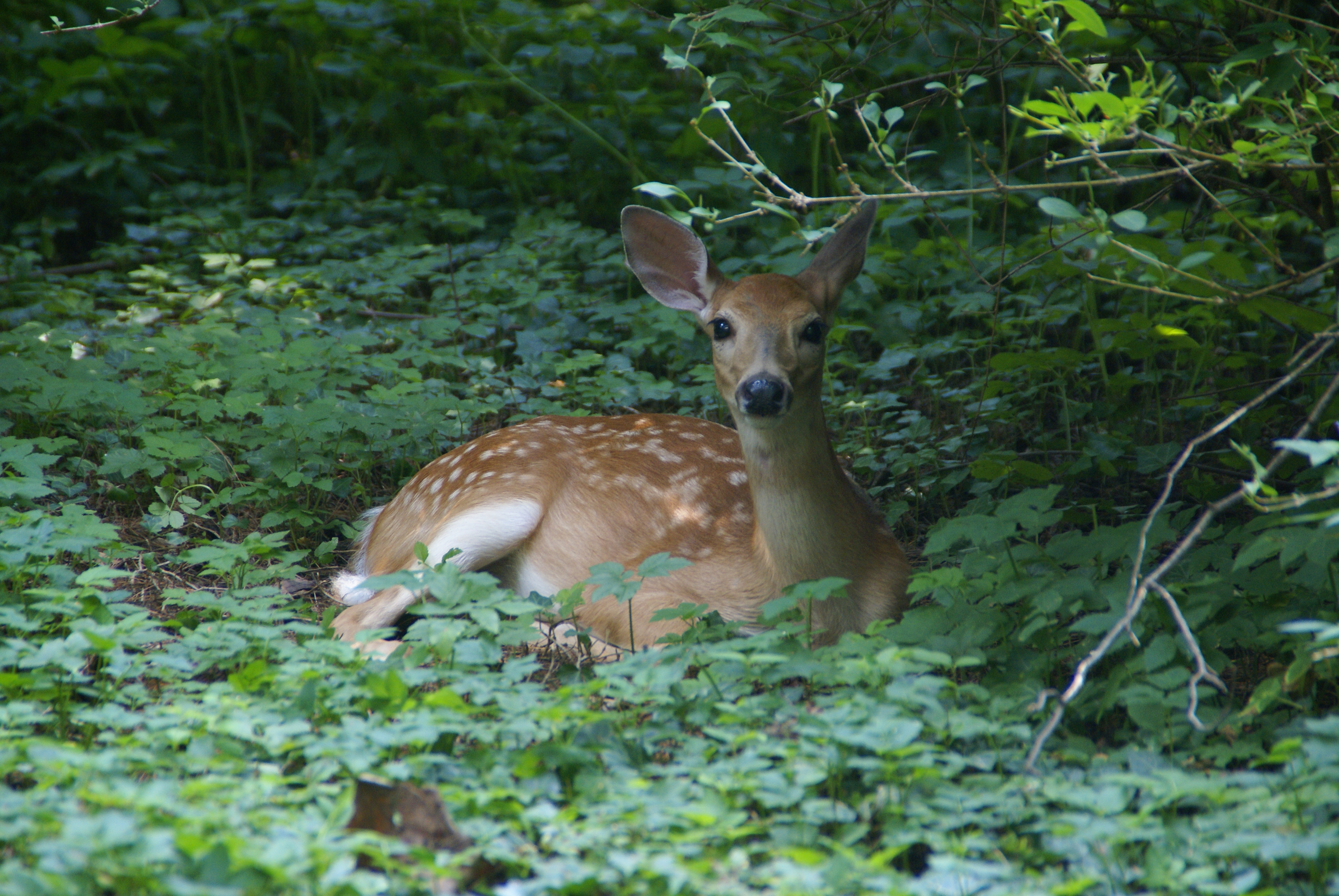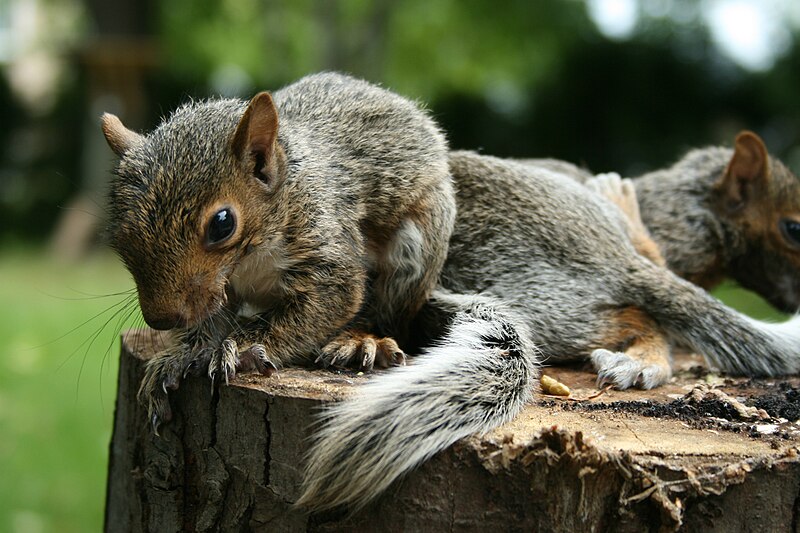My answer was "that was when she was done growing so she needed to come out" which resulted in a lot more questions about when other babies are born and how long they take to grow and come out rather than how they get in there in the first place (phew!). So this prompted a general overview of baby-timing strategies among the local wildlife - I stuck with mammals, as the original question was about a mammal, otherwise this would have gone on forever.
Most baby animals are born in the spring (like Beans!), but some come out of hibernation with babies already in tow... so who does what, where and when (but not necessarily how this time around)?
A few of the usual suspects we see around here:
Black Bears
Bears mate in summer, usually June or July and then cubs are born in January or February during hibernation. But the crazy thing is they aren't pregnant the whole time. The embryo actually stops growing a few days after fertilization and then waits until the start of hibernation to implant - Females head to bed in November. Males go to their den later - usually the start of snowfall (I guess they stay up playing xbox after the girls have left). If there are babies and how many is all dependent on the condition of the mother. If it's a good year for food and she's good and fat at the beginning of hibernation then there is implantation and she gets pregnant and there are cubs in the spring, otherwise she'll try again next year. Plus - more food = more babies. A really healthy female may have 2 or 3 cubs. Good years for blueberries mean a bunch of cubs the next summer. On average they stick around their mom for a year an a half, so they have cubs every 2 years or so. I'm really glad this doesn't work for people, because with the amount I ate I would have had 6 Beans at once.
 |
| A good blueberry year? |
Chipmunks
There is a chipmunk that is determined that our back drainspout is the perfect place for nuts and seeds. No matter how many times they wash out in the rain they get all stuffed back in there. It's a very stubborn little thing, which is perhaps why Beans loves it - they are kindred spirits. But that's besides the point - the question is if drainspout chipmunk was to have babies, when would that happen? Male chipmunks come out first when the snow is starting to disappear. The females are smart and sleep in a few more weeks (imagine sleeping in being measured in weeks, I can only dream. Mine is measured in minutes). Around here, this all happens around April and the main breeding season is from mid-April to mid-May. After a month they have about 4-6 young and at just over a month they'll start to come out of the burrow - so we don't see them until pretty much summer.
 | |||
| This picture turns me into a seven year old girl. Sooooo cute. |
Eastern Grey Squirrels (which are often melanistic (black) around here)
There are a lot of squirrels. Know why? Eastern grey squirrels breed twice a year, the first in January and February and the second in June and July. OK, they have also adapted well to people and steal stuff from bird feeders and nice people who feed them peanut butter on their railing (you know who you are), but the extra breeding really helps up the population quickly. Like bears, food is integral in the breeding - summer broods are usually bigger (anywhere from 1-6 are born each time). They will come out in spring with their babies already set to go (about 8 weeks old they start heading out). And just like in the storybooks they do nest in a hollow tree cavity (or a leaf nest or your attic if all the tree holes are taken).
|
Breeding season is late January or early February but can extend into March, although there's no shortage or raccoons so unless they have ridiculously high standards I think finding a mate would be fairly easy. Young are generally born in May and hang out in the nest for 8 weeks, which isn't great news if that nest happens to be your attic or garage I suppose. Females can breed the next year, which I'm sure helps out with the large population - that and the endless supply of green bins.
 |
| Oh look, unsecured garbage! |
White-tailed Deer
Deer are excellent at reproducing and a herd can double in a good year (see, there's that food thing again). In good years female fawns tend to breed at six to seven months old (I know, it's like a deer teen pregnancy right?) and at about a year have their first fawn. Breeding happens in the winter - November and into early December, with fawns usually born in the May or June. Older females usually have twins (3 and 4 do happen but rarely). After a rough winter or a bad year for food then single births are more common. Amazing how nature just sorts itself out like that. Unlike the others mentioned here there's no hanging out in nest or den, fawns are walking around in a few minutes and are only shaky for about a week. Important public service announcement: Fawns are usually left alone during the day so the mother's scent doesn't attract predators before they can run well. Fawns don't have a scent yet. If you find one please leave it alone where it is. If you are concerned you can check back periodically to see if mama comes back by night (but don't hang out because then she won't). Wildlife centres get overwhelmed in the spring by "orphaned" fawns that were perfectly fine.
 |
| S'all good, I'm just hiding. |
Groundhog (Woodchuck)
You know you are all doing the woodchuck tongue-twister in your head right now.
All groundhogs in our backyard are named Daisy. I've tried explaining that they are all different groundhogs and some might be boys to no avail, as soon as one is spotted the cry goes out of "Daisy!" and we must all go to the window to look at this particular Daisy. The young are born in May after a pregnancy of about a month. Four young are usually born, who will then all come under the fence 4 weeks later and eat the random things in our lawn and all be named Daisy.
| Practicing their shadow finding |
Coyote
Coyotes are fairly monogamous, and couples will remain together for several years, which is better than your average celebrity. Mating takes place mainly during February and March and pregnancy is about two months, so we see little coyote pups (3-7 of them) in the early spring. They are in burrows which they use for a few years in a row and thoroughly clean after giving birth and throughout the 3-4 week hanging out in the den stage. Clearly I would make a bad coyote - while I hung out in my "den" both times but I certainly didn't clean anything thoroughly.
 |
| Playing around...hey look! Rabbits! |
Eastern Cottontail
So that "breeding like rabbits" saying didn't come out of thin air. Breeding season starts in late winter (Februaryish) and continues into the fall, then they take a break over the winter. They have on average 5 kits at once, but anywhere from 1-12 is possible. Pregnancy lasts a month and the babies leave the nest another month later, completely independent, and it starts all over, for an average of 3-4 litters a year around here and up to 7 a year where it's warmer. The craziest part - sexual maturity is at 2-3 MONTHS of age. About a third of the rabbits will breed the same summer they were born!
 |
| All snuggly-wuggly in their nest... oh no, coyotes! |
Now, let's hope I've got a while before I have to answer the how... perhaps I can distract her with cute baby pictures a little longer.
 |
| We had no sticks and fluff but she was still a cozy spring baby |
Mammals! http://www.hww.ca/en/species/mammals/
Photo credits:
Bear: By National Park Service [Public domain], via Wikimedia Commons
Chipmunk: http://www.dcwild.com/mammals.htm
Squirrel: By Luxboyer (Own work) [GFDL (http://www.gnu.org/copyleft/fdl.html) or CC-BY-SA-3.0-2.5-2.0-1.0 (http://creativecommons.org/licenses/by-sa/3.0)], via Wikimedia Commons
Raccoon: By photo taken by flickr user garyjwood (flickr) [CC-BY-SA-2.0 (http://creativecommons.org/licenses/by-sa/2.0)], via Wikimedia Commons
Deer: By David Baron (originally posted to Flickr as Deer) [CC-BY-SA-2.0 (http://creativecommons.org/licenses/by-sa/2.0)], via Wikimedia Commons
Groundhog: By Wobbyball (Own work) [CC-BY-SA-3.0 (http://creativecommons.org/licenses/by-sa/3.0) or GFDL (http://www.gnu.org/copyleft/fdl.html)], via Wikimedia Commons
Coyote: John Harrison [CC-BY-SA-3.0 (http://creativecommons.org/licenses/by-sa/3.0)], via Wikimedia Commons
Rabbit: By Jhansonxi (Own work) [CC-BY-SA-3.0 (http://creativecommons.org/licenses/by-sa/3.0) or GFDL (http://www.gnu.org/copyleft/fdl.html)], via Wikimedia Commons

No comments:
Post a Comment